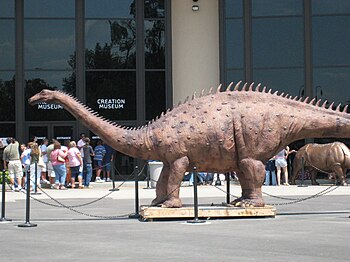Old Earth or New Earth?
 |
| English: The exterior of the Answers in Genesis Creation Museum in Kentucky (Photo credit: Wikipedia) |
Reading Ted Cabal’s book leans toward an old-earth view, but that’s not the point of his book. His point is that the rhetoric we use to defend our view matters. For example, we should not call the age of the earth a “gospel issue.”
Cabal argues calmly, thoughtfully, and charitably.
He explains that professing evangelicals engage evolution today in four different ways (and a popular group is associated with each):
- young earth creationism (Answers in Genesis)
- old earth creationism (Reasons to Believe)
- evolutionary creationism (BioLogos)
- anti-evolution without theology (Intelligent Design, e.g., Discovery Institute)
 A forthcoming debate-book for Zondervan’s Counterpoints series features these four views:
A forthcoming debate-book for Zondervan’s Counterpoints series features these four views:- Young Earth Creationism: Ken Ham (Answers in Genesis)
- Old Earth (Progressive) Creationism: Hugh Ross (Reasons to Believe)
- Evolutionary Creation: Deborah B. Haarsma (BioLogos)
- Intelligent Design: Stephen C. Meyer (The Discovery Institute)
Cabal explains that in the 1920s, those who opposed evolution called themselves “anti-evolutionists” rather than creationists. They “agreed on the dangers of Darwinism but not the correct interpretation of Genesis. Most fundamentalists held to the gap theory, some to the day-age theory, and only a small minority of mostly Seventh-day Adventists held to recent creation in six literal days. All three groups thought of themselves as biblical literalists, and primarily only the Adventists regarded the earth’s age or differing views of Genesis as particularly important in the contemporary battle of ideas” (pp. 122–23). That began to change in 1961 with Henry Morris and John Whitcomb’s The Genesis Flood.
Cabal tells the story well, and he argues compellingly.

